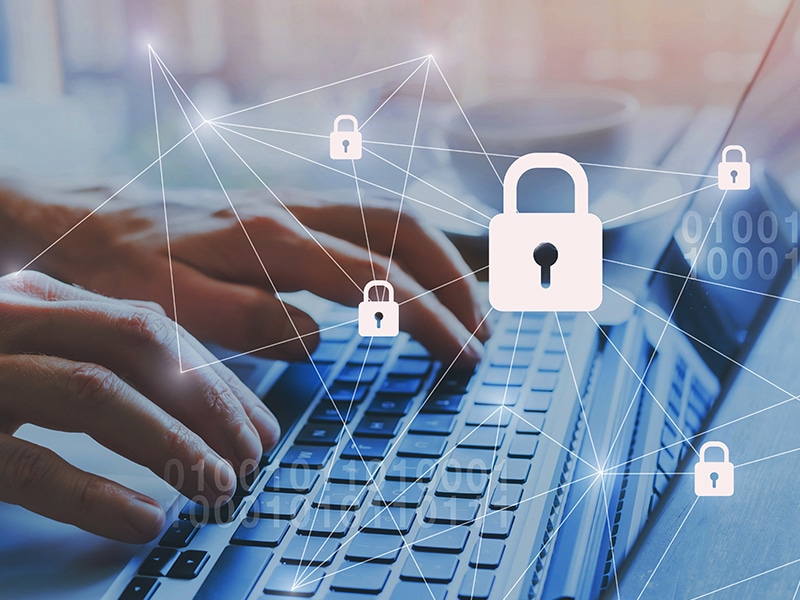Cyber attacks, hacking, and digital information theft are becoming more and more prevalent in our world. In fact, many people are becoming as concerned, or even more concerned about digital attacks than they are about physical theft. In the same way that you install a security system in your home to prevent theft, you should use the same care and precautions with your electronic devices.
We do not want to use scare tactics to convince you and your business to install more security. However, one of our priorities as a service provider is to help protect your business, our profit, and your productivity. Data breaches and losses will hinder your efficiency enterprise-wide and hurt your bottom line.
One of the best ways to stop these threats is by knowing the most common methods of cyber attacks:
Some Potential Network Threats
1. Hacking Strategies – Today, hackers will register false accounts in data centers, create web pages, install their malware, hide domain and IP addresses, and then delete the original account. That’s why 24/7 monitoring and threat remediation from a managed services provider is so important in protecting your network.
2. Encryption Methods – Encryption is a form of defense for your most sensitive information, but it can also be used in negative ways. Hackers might also use encryption methods to their benefit once they have made their way into your systems using ransomware.
A hacker can use encryption methods to hide in plain sight and across lines of network communication. This practice gives them more time to operate undiscovered. This type of attack can be tough to spot, but at ANC Group we use tactics like threat remediation to respond to these hazards and learn more from every incident.
3. Social Media – Social media provides another point of entry for cyber attacks. Hackers can use social media profiles and private information to learn more about their targets. They use your personal information to figure out who to pretend to be in later intrusion attempts, which often come in the form of impersonating a trusted leader and send malicious code along with an innocent looking PDF, Word document, or Excel spreadsheet.
An employee who doesn’t know better may open and/or download these files, allowing an entry point for attackers. This type of security threat is something that takes proactive action on the part of your employees to stop these before they start.
4. Mobile Devices – Mobile devices are no longer safe from intrusions. Hackers now have creative ways of convincing people to download malicious apps onto their phones and other devices. From there, there are a variety of ways to gain access to other systems and networks.
While it may seem cost effective to implement a bring-your-own-device (BYOD) policy, there are many risks when it comes to security. Take great caution when you are developing your BYOD policy and consult with an expert service provider. It could cost you a lot more down the road in the event of an attack.
5. DDoS Attacks – One of the latest growing trends in growing network security threats are Distributed Denial of Service (DDoS) attacks. This particular type of assault involves hackers targeting a particular web server or network resource. They flood the equipment with service requests that eat up network bandwidth and eventually cause a denial of service.
Unfortunately, once this style of attack has been initiated, there’s really not a quick fix. The best strategy is to prevent the assault before it starts by installing security services that will protect all points of entry for your network, making sure that the malware flooding your network never gains a foothold.
Vulnerability Assessments
Cyber attacks can result in lost or corrupted data, which greatly impacts both revenue and client trust— two things that are very difficult to earn back once they are gone. That’s why it’s important for us to learn as much as we can about the weak points in your systems where attackers may benefit off of vulnerabilities. One of the ways that we gather this threat intelligence is with vulnerability assessments.
Vulnerability assessments and penetration can often be mistaken for one another, but the truth is they are two different strategies for increasing your security. And a superior security program will include both approaches. A vulnerability scan is a focused examination of your systems, your network, and access points.
It is a detailed process that includes the following:
The Process:
1. Collecting data and understanding the gathered information about your systems.
2. A review of the results and applying hard risk numbers to your operating systems, applications, ports, and services.
3. Discovery of the actual vulnerabilities and reporting to shore up, configure, or debug the weakness we find.
The Benefits of a Vulnerability Assessment
A vulnerability scan is not enough to protect your operations. You need a security provider with vulnerability assessment training and the skills to implement the changes that are offered by the assessment process. There are several advantages that come with working alongside a service provider with the tools and techniques to strengthen your weaknesses:
- Detect security weaknesses before attackers do.
- An inventoried list of all the devices on your network, with their purpose.
- A listing of vulnerabilities for each device.
- Preparation for future upgrades.
- Established security record for later assessments.
- A defined risk assessment for your entire network.
- A plan for the risks vs. benefits of optimizing your security investments.
This is a proactive approach to maintaining the integrity of your entire operation. Strategies like this cannot be left to the last minute or after you have already experienced a data breach.
Conclusion
Cybersecurity is a growing concern for anyone that is operating a business. As technology advances, so do the threats that we face. We can help you stay ahead of these potential threats with security services that do more than just defend. You need security testing precautions that take the offensive and actively learn from encounters with malicious software or hazards like phishing attacks and data breaches.
To learn more about network security and what the ANC Group can do to help defend your productivity, contact us today.

